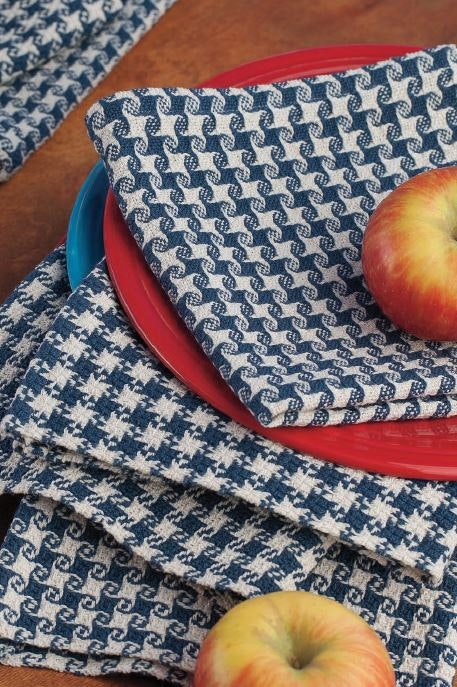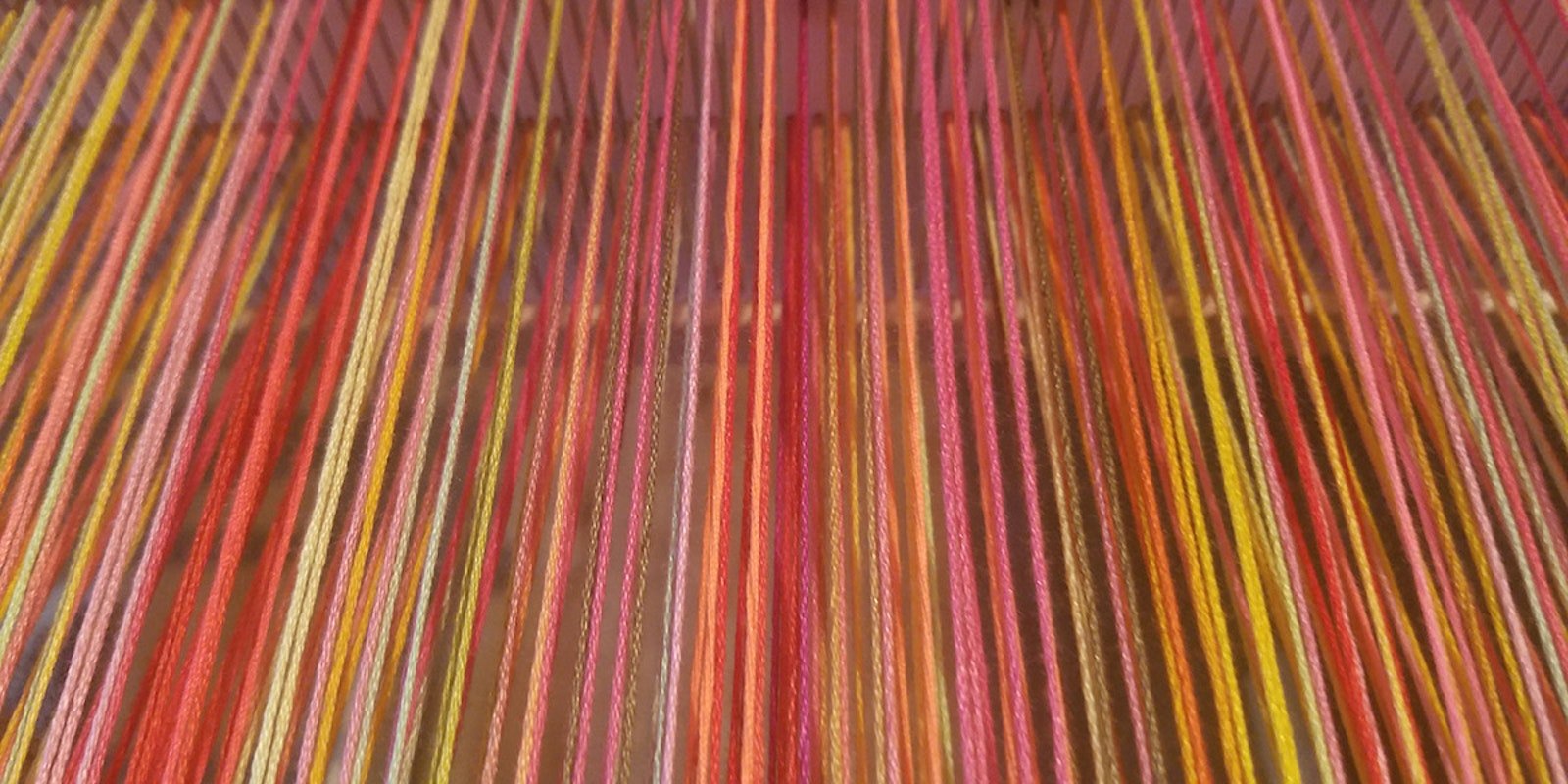The end of this month of May will mark my five-year anniversary with Handwoven. It’s hard to believe that when I started, I had just one weaving class under my belt and couldn’t imagine owning a floor loom any time soon, much less two. I knew I loved weaving, and I was excited to explore as much as I could. As ready as I was to jump in and see what I could do, I also realized I needed to expand my weaving comfort zone at a reasonable pace. There’s no better way to get burnt out on something you love than setting your aim higher than your ability. So I started slow and with each new project, structure, and technique, my confidence grew and so did my love for weaving.
Two-shuttle napkins designed by Christina, from the May/June 2014 issue of Handwoven
(Now, that said, sometimes it is good to be oblivious to what’s considered difficult. For example, I only found out after I did my first two-shuttle weave that two-shuttle weaves are supposed to be tricky, especially if you have to do special tricks at the selvedges. I didn’t know any better so I just boldly blustered ahead and as a result I have no fear of weaving with two shuttles.)
I had this particular lesson called to mind this weekend. I recently acquired a new, wider loom, the story of which I’ll be sure to tell later. Unfortunately for me, I have at least two more projects (and possibly three at this point) scheduled on my other looms before I can start playing with my new 40-inch weaving width. Fortunately for my husband, that meant he could start plotting and planning to weave a rug—something he’s wanted to do for a while. I gave him some resources on rug weaving and he poured through them as I finished up a set of Finnish twill tea towels.
He knew he wanted to weave with yarn rather than rags, and wanted a loom-controlled weave if possible in lieu of having to use clasped weft and other hand-manipulated techniques. While looking through Handwoven back-issues, he spotted a rug that used shaft switching. He wanted to know more, but once he learned about this design technique, he wondered to me why anyone would do something so complicated.
For a minute, I flashed back to five years ago when anything other than twill scared me. When the idea of designing anything more complicated than a tea towel would have been nerve wracking. When I shuddered at the thought of trying to warp something slippery like silk. I told him that I wouldn’t suggest it right now, but after a project or two he might become so comfortable at the loom that what once looked complicated is now enticing. Or maybe he’ll want to get more design boom for his buck and give it a try and find out it’s not that bad once you learn how to do it.
Because that is a big part of weaving and other creative endeavors: growing and expanding your comfort zone. Learning new techniques to take your designs and your cloth further. For different weavers, the rate at which you expand your repertoire can be vastly different. Some weavers might weave nothing but twill in 8/2 cotton for years, while others will weave one beginners project and immediately jump into complex weaving.
Fortunately for all of us, there are so many wonderful resources available as we wish to grow. We have weaving guilds where we can take workshops and learn from fellow weavers with more (or just different) experience. We can read the many wonderful books on general weaving and specific techniques. We have blogs and websites galore where we can connect with weavers from around the world. We also have videos where we can learn from experts in their specific fields, from Tom Knisely to Madelyn van der Hoogt to Rosalie Neilson. Most recently, Liz Gipson just released a video on using two heddles to weave doubleweave on the rigid-heddle loom. Imagine the possibilities!
Every time I’m at the loom happily weaving away, I tend to think back to Past Me, and smile. I knew back then that even though I was new and I was nervous that someday I would learn the language of my loom and a whole world would open up. I’m happy to say I wasn’t wrong.
Happy Weaving!
Christina

